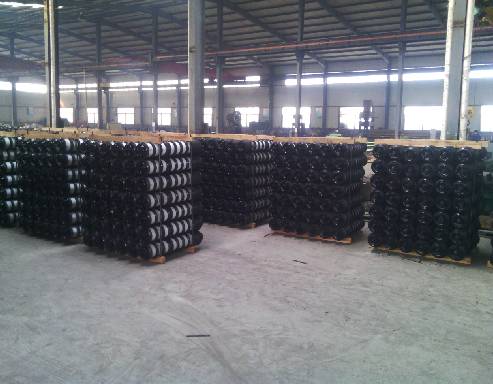 Afrikaans
Afrikaans  Albanian
Albanian  Amharic
Amharic  Arabic
Arabic  Armenian
Armenian  Azerbaijani
Azerbaijani  Basque
Basque  Belarusian
Belarusian  Bengali
Bengali  Bosnian
Bosnian  Bulgarian
Bulgarian  Catalan
Catalan  Cebuano
Cebuano  Corsican
Corsican  Croatian
Croatian  Czech
Czech  Danish
Danish  Dutch
Dutch  English
English  Esperanto
Esperanto  Estonian
Estonian  Finnish
Finnish  French
French  Frisian
Frisian  Galician
Galician  Georgian
Georgian  German
German  Greek
Greek  Gujarati
Gujarati  Haitian Creole
Haitian Creole  hausa
hausa  hawaiian
hawaiian  Hebrew
Hebrew  Hindi
Hindi  Miao
Miao  Hungarian
Hungarian  Icelandic
Icelandic  igbo
igbo  Indonesian
Indonesian  irish
irish  Italian
Italian  Japanese
Japanese  Javanese
Javanese  Kannada
Kannada  kazakh
kazakh  Khmer
Khmer  Rwandese
Rwandese  Korean
Korean  Kurdish
Kurdish  Kyrgyz
Kyrgyz  Lao
Lao  Latin
Latin  Latvian
Latvian  Lithuanian
Lithuanian  Luxembourgish
Luxembourgish  Macedonian
Macedonian  Malgashi
Malgashi  Malay
Malay  Malayalam
Malayalam  Maltese
Maltese  Maori
Maori  Marathi
Marathi  Mongolian
Mongolian  Myanmar
Myanmar  Nepali
Nepali  Norwegian
Norwegian  Norwegian
Norwegian  Occitan
Occitan  Pashto
Pashto  Persian
Persian  Polish
Polish  Portuguese
Portuguese  Punjabi
Punjabi  Romanian
Romanian  Russian
Russian  Samoan
Samoan  Scottish Gaelic
Scottish Gaelic  Serbian
Serbian  Sesotho
Sesotho  Shona
Shona  Sindhi
Sindhi  Sinhala
Sinhala  Slovak
Slovak  Slovenian
Slovenian  Somali
Somali  Spanish
Spanish  Sundanese
Sundanese  Swahili
Swahili  Swedish
Swedish  Tagalog
Tagalog  Tajik
Tajik  Tamil
Tamil  Tatar
Tatar  Telugu
Telugu  Thai
Thai  Turkish
Turkish  Turkmen
Turkmen  Ukrainian
Ukrainian  Urdu
Urdu  Uighur
Uighur  Uzbek
Uzbek  Vietnamese
Vietnamese  Welsh
Welsh  Bantu
Bantu  Yiddish
Yiddish  Yoruba
Yoruba  Zulu
Zulu Design and Functionality of Conveyor Drum Systems in Material Handling
The Significance of Conveyor Drums in Material Handling
Conveyor systems have transformed the landscape of material handling across various industries, from manufacturing to mining. At the heart of these systems lies the conveyor drum, a pivotal component that significantly influences the efficiency and effectiveness of material transport. This article delves into the importance of conveyor drums, their types, functionality, and maintenance practices.
A conveyor drum, also known as a pulley, serves as the driving force in a conveyor system. Typically situated at the end of a conveyor belt, these drums are responsible for the movement of the belt, enabling the smooth transfer of materials from one place to another. They come in various designs, including drive drums, return drums, and tail drums, each serving a unique purpose in the conveyor system.
Drive drums are equipped with a motor and are vital for powering the belt. As the motor rotates the drum, it effectively pulls the belt along, allowing for continuous movement of materials. Return drums, on the other hand, support the belt as it returns to the starting point, maintaining the necessary tension and alignment. Tail drums, positioned at the end of the conveyor, help in guiding the belt accurately while also providing structural support.
The construction materials used for conveyor drums play a crucial role in their performance
. Common materials include steel, rubber, and aluminum, each chosen for its durability, weight, and resistance to environmental factors. Steel drums are widely used for heavy-duty applications, offering robustness and longevity, while rubber drums are preferred for their ability to minimize noise and reduce wear on the belt.conveyor drum

Effective maintenance of conveyor drums is essential to ensure optimal performance and extend the lifespan of the conveyor system. Regular inspections should be conducted to identify any signs of wear, corrosion, or misalignment. Proper lubrication of the drum bearings is also crucial, as dry or worn bearings can lead to increased friction and potential system failure. Additionally, ensuring that the belt is correctly tensioned around the drum will help prevent slippage and material loss during transport.
In terms of efficiency, the correct selection and maintenance of conveyor drums can result in significant cost savings. A well-functioning conveyor system minimizes downtime, reduces energy consumption, and enhances productivity. It also plays a vital role in ensuring the safety of operations by preventing material spillage and equipment damage.
As industries continue to evolve and require more sophisticated material handling solutions, the design and technology surrounding conveyor drums will also advance. Innovations such as smart sensors and real-time monitoring systems are on the horizon, aiming to enhance the reliability and efficiency of conveyor systems further.
In conclusion, conveyor drums are indispensable in modern material handling systems. Their role in facilitating the movement of goods, combined with the importance of maintenance and technological advancements, underscores their significance in enhancing operational efficiency across various sectors. A keen focus on these components will undoubtedly lead to improved productivity and sustainability in the long term.
-
Revolutionizing Conveyor Reliability with Advanced Rubber Lagging PulleysNewsJul.22,2025
-
Powering Precision and Durability with Expert Manufacturers of Conveyor ComponentsNewsJul.22,2025
-
Optimizing Conveyor Systems with Advanced Conveyor AccessoriesNewsJul.22,2025
-
Maximize Conveyor Efficiency with Quality Conveyor Idler PulleysNewsJul.22,2025
-
Future-Proof Your Conveyor System with High-Performance Polyurethane RollerNewsJul.22,2025
-
Driving Efficiency Forward with Quality Idlers and RollersNewsJul.22,2025





























